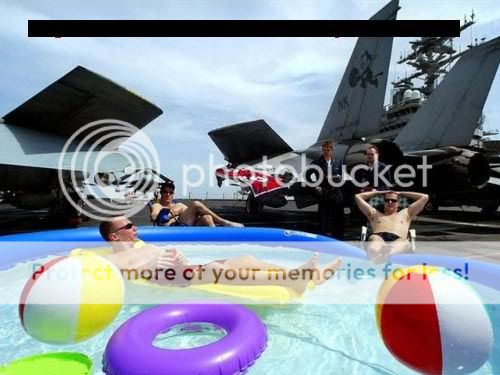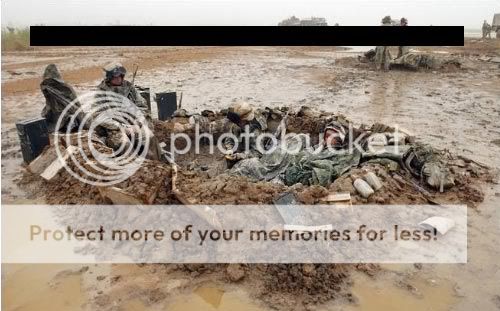Back to the event and the larger questions that it posed in serious gaps of coordination between various players. To begin with, why did the Navy insist upon going it alone when the gauntlet had been thrown to them on their territory? Why did they remain hesitant in seeking the Pakistan Army’s support which is, whether we like it or not, more attuned to fighting such a menace on the ground? Why did the Air Force not launch a helping pincer from their end of the geographical divide in bringing an early closure to this embarrassment? If the Air Force effort was inadequate for such an undertaking at that point in time, should the army not have been launched as a supporting manoeuvre? The Navy fought it alone, with some help from the Sindh Rangers, and shed priceless blood; we need to save this blood for a larger cause not fritter away resources where complementarity regardless of the colour of uniform will help minimise our losses. Sensitivity to service turf is a known quandary but there are times when we will need to rise above these frivolities.
Zarar reached the spot within the stipulated time frame. The Navy didnt agree on it's employment, they wanted the
their commandos to undertake the operation.
So much for the factual reporting.
To the next question then, and this I pose to the three regional commanders in the south: was there an immediate meeting of the three that continued till the fracas ended to gauge the nature of the threat and evolve responses in facing up to the challenge? While the troops on the ground grappled with the situation as it presented itself, where and at what level was the strategy being refined and instituted with consistent allocation of more specialised forces and resources to quickly bring the situation under control? Was the CCTV information being fed to a central ops room where the three commanders would have a view of the unfolding drama as indeed the comfort of undisturbed peace to think things through and order actions accordingly? If not, why not? There is still the need to put in place the necessary accompaniments of fighting this menace through joint resource allocation, especially in large vulnerable defence complexes.
i agree.
But then the situation was not as vague as the writer points it out. Coordination was carried out at the highest possible level during the assault, though it may not be termed as an text-book type execution of the same. How do you think Zarar and guys reached the spot?
To begin with, how about placing a company each of army SSGs at all major defence installations under the local commander to develop a hypothesis of threat and prepare with suitable local additions a robust capacity to fight off any such future venture? How about joint user airfields where civil aviation and a service, primarily the Air Force, operate together without gaps in sharing responsibilities?

Sir ji, has retired from PAF, no doubt he has 'high' expectations. The airforce is luxurious, i know that.
To ease it on your nerves:
Airforce
Army
Anywaz, i for one would love to have a SSG Bn in every sensitive installation, but the questions is, can we afford that? Is it possible? Is that what other militaries have done? And most importantly, is that the only answer/option? i would call this action (placement of SSG) as
over-doing. SSG are not body guards. Also, a job that can be done by regular forces (immediate protection of a base/cantt etc), must not be given to specialized forces (trained for special ops, CQB, CTC, deep interdiction, recce in depth etc - please bear the fauji terminology). Bases/cantts have worked out quick reaction capabilities post these kinda attacks, so the question should have been regarding the efficiency of such task-forces, rather than suggesting idealized options which are beyond our capability ala fencing the Durand Line, getting rockets to land vertically, having laptop batteries that have uranium as their power source.
On one hand we advocate to down size the military and make it more 'efficient', and if this is how you guys want to do it (converting the entire military into an SSG type force), than i feel sorry for you. BTW, if the writer had known anything about
Light Commando Battalions, he would never have asked for a complete fringging SSG company to protect our bases. Though LCBs are not necessarily here for the said purpose.
i wish Blain was here.
One is aware of the Achilles’ heel in this entire gamut of joint operations, and this still is a war of a different kind, seeking integrated responses where such concurrent presence exists. For the common reader this is not an exclusive headache of the Pakistani system alone but of most military systems where hierarchical service structures have sustained. While we do not need a single apex system, we have equally failed to comprehend the joint system of command as a concept. The chairman joint chiefs is the head of a committee, i.e. the joint chiefs committee, without which he essentially remains the head of a secretariat. Only when the three service chiefs convene together as the joint chiefs does he gain relevance. The joint command therefore rightfully belongs to the joint chiefs who must thus, without reservations, convene more than often to grapple with the newer paradigms of both conceiving the 21st century threats as much as to allocate relevant defensive or offensive force to neutralise such threats. When they begin to do so, the subordinate commanders spread all over Pakistan will find it that much easier to coordinate efforts among themselves on a geographical basis to present more credible options in fighting our most impending threats. Let’s cross this bridge — we are there.[/SIZE][/FONT]
i agree in totality.
i suggest, an entity like Disaster Management Authority should be made capable/provided with resources to provide a command center/post for such operations. They should be the first to respond (as regards to a concentrated effort, including Zarars being flown into the zone of ops etc.) AOR should distributed as it is in case of Pulce Thanas, a senior commander (he can be the local Brigade Commander, Base commander, DPO, IG, Commandant FC, a civilian from the DMA, anybody who knows what to do in such situations) within his particular AOR should immediately take charge of the situation - reach the place of attack/office of the DMA etc where he is presented with all the info like the writer suggests - the video feed, the resources at his disposal (Rangers, Pulce, Army, Navy, Airforce, FC, doctor party, 1122, fire brigades, media handling whatever). He shoukd start assessing the sitution and analyse it to form a well thought out and well planned response. He can then task anybody (ranging fron local Police to Zarar Company). Further, the control room and the charge may then be handed over to the next senior upon his arrival/availability.
Fortunately we do have the resources and the capability, but unfortunately we dont have any SOP to synergize them.
This woukd be like a
SCHEME (as the Army has Flood Relief Schemes, IS Schemes etc i.e. we have a written SOP entailing very detailed response and action of EVERYBODY, starting from the sweeper till the highest commander, in case floods happen etc), but at the National level. The Schemes include the list of actions that should commence at the onset, it include ph numbers of concerned individuals, Dos and Donts, the sequence of actions, what to do if a senior is not available or is missing and a junior commander has to carry on, in short, it lists all the actions which are self explanatory and can be executed/run/ordered by any Officer, no matter how junior he is, but if he would follow the write up, he would not likely face any major problems during the response.
e.g.
i know when i take over a new appointment and read the Flood Relief Scheme of a particular province/district, then i know that in the months of say, Aug and Sep i must setup a team that would monitor the river flow and rains. i then know that if the rains exceed a particular limit (mentioned in the Scheme) than i must setup a round the clock duty room that should stay updated with the situation as regards to the major rivers. The Scheme tells me the exact point of time i should start contacting the DCO of the district, it also tells me what i should expect out the local police, it also tells me what all assistance i can get from the local population, it also gives me the list schools, BHUs, open spaces that can be used to store releif guuds, it tells me at what point of time the Irrigation Dept should start giving me Situation Reports, now if they dont do it, i have the concerned ph numbers and i can call the chief engineer and tell him to wake up and start doing what he is paid for, and so on and so forth.











